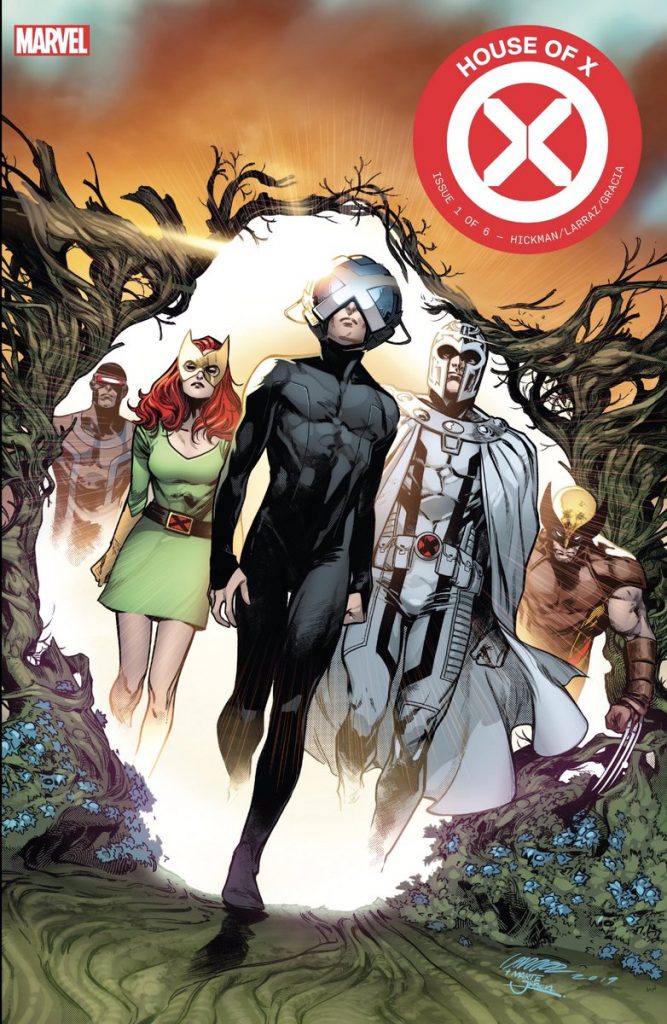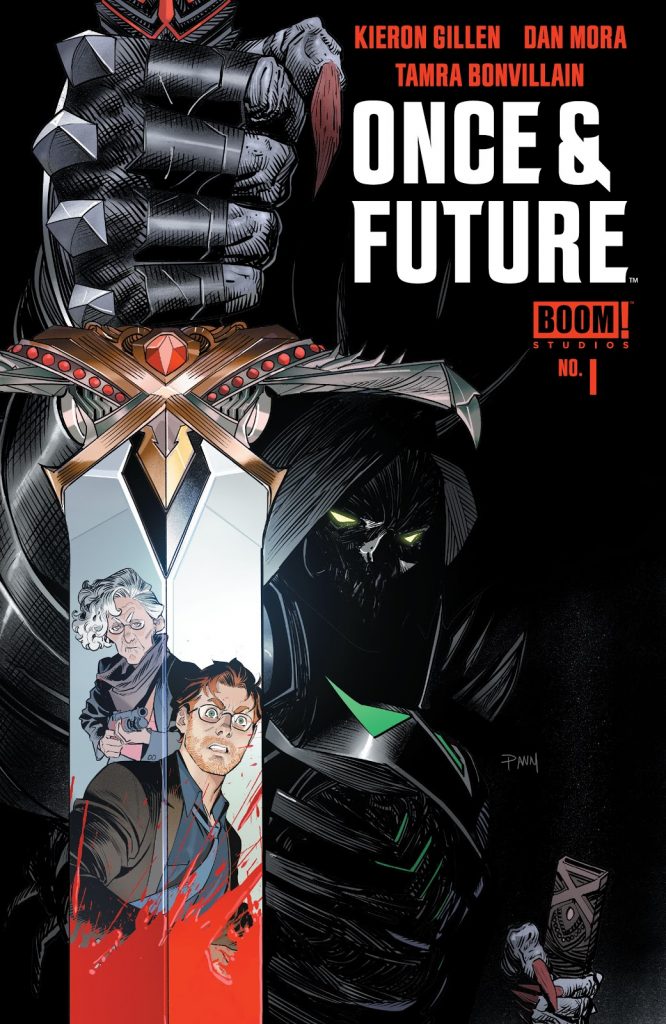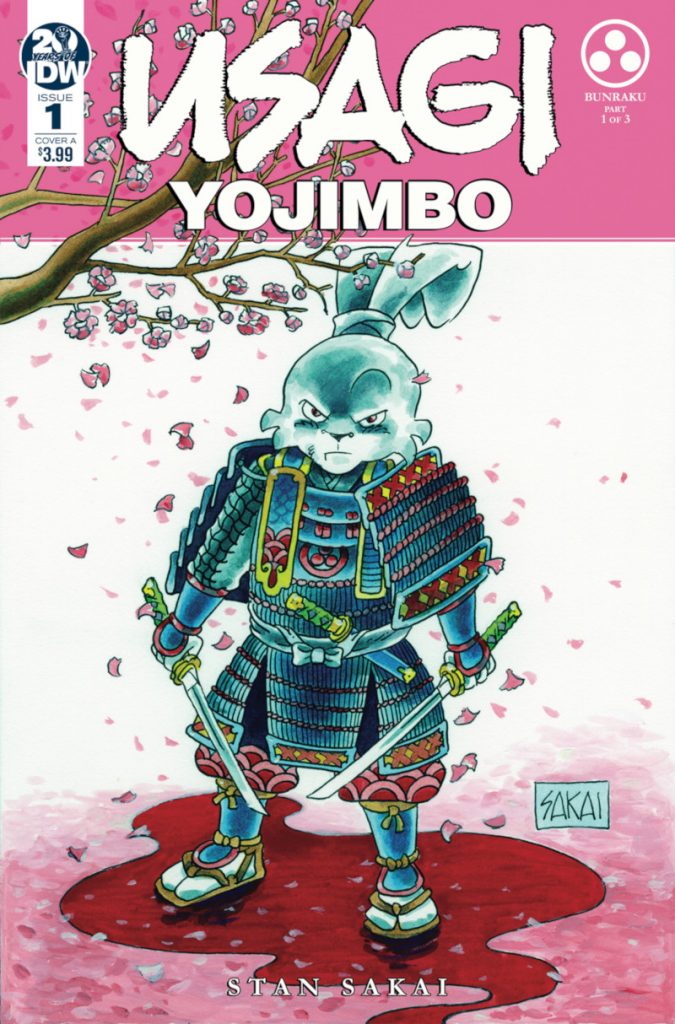A Matter of Risk
The direct market has a quiet problem limiting its potential, but it might be a solvable one if everyone can just agree on a few things along the way
One of the challenges the modern comic world faces stems from a great disparity at the core of fandom. Comic movies are massive. The online conversation about the characters and even the comics themselves is huge. Serialized storytelling is at its apex for broader acceptance. Yet monthly comic sales top out in the low six figures, with the vast majority of titles being ordered far less than that. There’s an enormous delta there, and it’s one that limits the single-issue format and the potential growth of the medium.
That incongruence is the nut to crack in the direct market, as most feel sales should be higher if only because of the very pro comic stories environment we live in. This is the type of conversation you hear a lot during conventions, and it occasionally spills into comics Twitter, like when writer Jim Zub openly wondered about this subject on the occasion of the Comic Book subreddit hitting 954,000 subscribers. What causes that gap, everyone asks?
There are a whole lot of factors that play into that, and if you think this piece is going to be about all of them, you’re unfortunately mistaken. That’s more of a book than a longform, and one that may be impossible to answer in full. If I could do that, I’d probably be running my own comic book empire, not writing this article. Instead, I’m going to look at an important factor in that equation, and one I don’t often see discussed when this topic comes up. While it’s not as important as the inherent lack of broader appeal to the floppy format or the cost/benefit conundrum it presents at its core, it’s one of the themes of the year in the comic industry. That theme?
It’s risk aversion, and how everything the direct market has went through in recent years has led to comic shops battening down the hatches to survive, publishers refocusing their efforts to maximize profits in any way necessary, and a disconnect between the two that has created a sector of comics with a ceiling that makes it harder than ever to survive in, let alone thrive. And today, we’re going to be examining what the issue really is, what led us there and what can be done about it, if everyone can just agree on a few things along the way.
Let’s start with the basics: what do I mean when I say, “risk aversion,” at least in this situation? I could just explain it, but instead, I’m going to use two recent examples to show you what I’m talking about. One is designed to explain that subject on the retailer side of the business and the other showcases that same phenomenon in the publisher sector. Let’s start with the former.
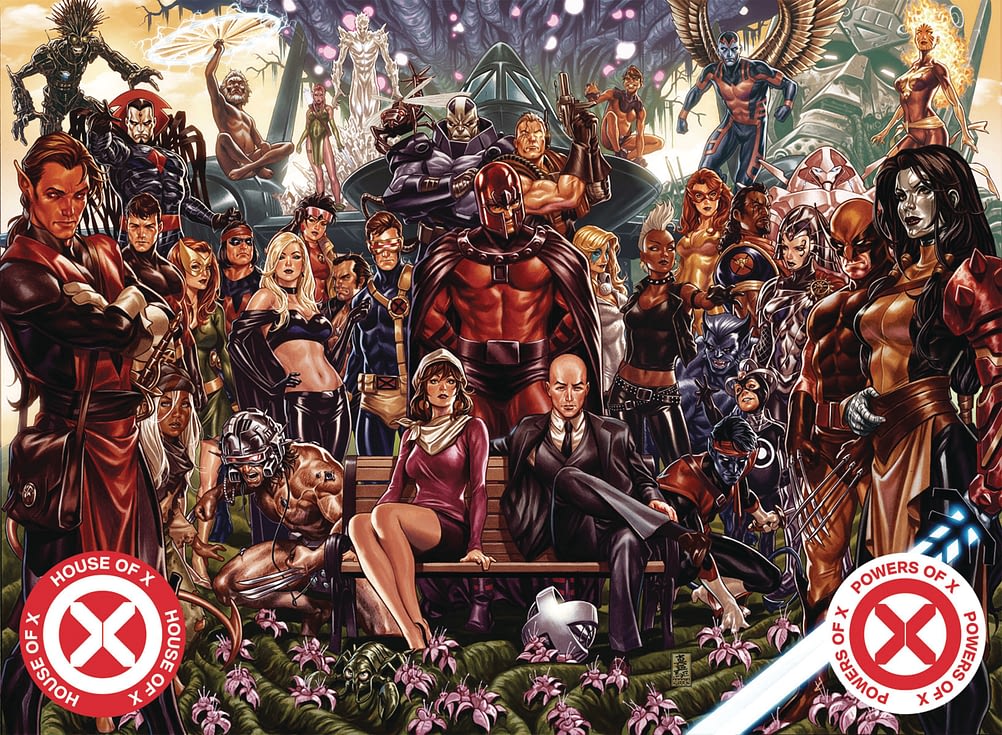
That’s House of X and Powers of X, the two titles that are kicked off the Jonathan Hickman-driven relaunch of the X-Men line. It may seem bizarre to use these titles for anything besides proof of what works in comics, as HoX and PoX – as they’ve become affectionately known as – are the hottest single issue comics right now by a significant margin. They dominate the conversation both online and in comic shops, they’re selling out seemingly every time an issue drops, and they’re a true rarity in this day and age as both are seemingly organic successes rather than ones fueled by speculators. 1 These are all good things.
The problem lies in the fact that a comic selling out is not universally a good thing, even though it might seem that way. Yes, selling out does indicate that there was enough interest to go through a shop’s entire inventory, and yes, selling out on a distributor level does highlight that this isn’t just a localized thing. They’re hits! This is good!
But these sell outs are a product of retailers limiting their own exposure, as some shops moved through their inventory of House of X #1 in hours or days because they ordered for what X-Men comics usually are for them rather than what they could be. Shops are so careful about managing failure because of current market conditions that it can put an artificial cap on even the most successful titles, ensuring that something as certain as a Jonathan Hickman written X-Men relaunch is handled with trepidation.
It’s easy to see why that would be the case too. House of X #1 – the title that set the starting levels for all of these comics – had a whole lot going for it. But from an ordering perspective, it had plenty going against it as well. Let’s start with the biggie: in the direct market, single issues are largely unreturnable, meaning that if they don’t sell, that’s tough. Shops eat the cost while your average publisher gets their full share, meaning a disproportionate amount of the risk falls on retailers. While publishers occasionally show belief in their own projects by making them returnable, this was not one of those cases. It was also $5.99, meaning there was a higher cost for ordering and a larger amount of cash shops would be down if these didn’t move.
Those two alone illustrate why this is a problem. Comic shops don’t want to be trapped with unsold inventory and, on titles like House of X #1, they’re offered little recourse. So it has gotten to the point where ordering is all about mitigating risk rather than aiming for growth in the market. I’ve heard it many times before: you can’t order with your heart, you have to order with your head. Shops are trying to walk a tightrope that allows them to sell to their usual customers and still have just enough copies for the shelf for the purposes of discoverability. There’s a small window there, and that’s the land they’re trying to live in. You won’t make a ton of money necessarily doing this, but you also won’t kill your business going that route.
Naturally, most retailers played HoX and PoX in this way, and what some found were rapid sellouts and frustrated customers who just wanted to read the new hot thing. 2 I’ve heard from several shops who quickly saw a wave of customers adding both titles to their pull lists after the buzz exploded with HoX #1, but with those shops unable to deliver because initial inventory was sold through so quickly and the second print’s order cutoff was before the release of the first issue. 3 That leaves plenty of customers wanting, likely searching their areas in hopes of tracking down a copy for themselves.
And due to the weekly nature of the title, this dilemma cascaded forwards, as these absolutely en fuego comics had to try and serve – roughly speaking – the estimated 185,630 potential readers created by the first issue sales of House of X #1 4 with the 101,972 copies that were ordered of the second issue, a decrease of over 45%. It might seem wild to you that shops would order so many fewer copies of the second issue than the first, but again, this is all about risk management. Most titles see heavy attrition with the second issue, as the first issue often convinces readers to not return for the follow-up or perhaps to buy the full story in trade. That seemingly did not happen here. So we had a pair of titles that were already limited to a certain degree because of one manifestation of risk aversion on the retailer side with the first issue, and its potential was even further restricted by another realization of it with the second.
When we ask ourselves “why aren’t orders higher on comics in the direct market?” just remember what a success looks like. These titles are still a hit, of course. But the current environment led to an unfortunate limitation on how many copies were ordered and a struggle to fulfill consumer desires, which could chase lapsed and new readers curious about these buzzed about books away. 5 It’s the snake eating its tail into infinity, leading to a title that does quite well but perhaps not nearly as well as it should.
And this is something that is affecting every comic. When I did my retailer check-in a little while back, ordering tighter was the name of the game. Shops were protecting themselves from inventory that might not move but capping the potential of every title in the process. And I don’t blame them for it. In an era of reluanches, order-gated variants, endless events and a deluge of titles to choose from, you have to make tough decisions about how much stock to carry. It’s essential to profitability and, ultimately, survival. 6 Shops probably aren’t enthusiastic about tightening their belts in this way. But in the face of where the market is, it’s the only responsible decision.
Now, on the publisher side of the “risk aversion” idea, we have BOOM! Studios and Once & Future #1, a house that’s widely considered to be one of the most retailer-friendly and a title that has been a monster hit for them. Per a piece on Bleeding Cool, BOOM!’s President of Publishing and Marketing Filip Sablik shared that this first issue was on pace to move 45,000+ units, a monster number for them. This is a good thing. But again, this is where we get into risk aversion, because my belief is this number could have been far higher.
As you might know, Once & Future #1 had four printings sell out before the first issue was released. Many took this as an exciting thing, and again, sell outs are good! I’m happy this comic has been moving as many units as it has, with the title now on its sixth printing. But the way BOOM! handled these printings is an excellent example of managing failure on the publisher side of the equation, as Sablik admitted to retailers that the small-ish sizes of this title’s print runs were set before final order cutoff – they made a “reasonable guess” of what demand would be – in hopes of fast tracking those later printings. Instead, it led to a logjam of orders where shops who ordered the second print would get their orders rolled over to the third 7 and beyond, as initial demand wasn’t even met in hopes of serving the next wave of orders better.
They didn’t want to be caught without inventory to deliver to shops, but by doing so, they based their print runs off a mix of historical performance and intuition, leading to a wildly underserved audience. If that issue actually hits 45,000 in total orders when we’re all said and done, then that means nearly 36% of orders came from later printings, the majority of which were set before release, many of which won’t arrive until well after many readers have moved on from the shops who have ordered them.
Mercifully, BOOM! Studios is a genuinely good partner for retailers. While Once & Future #1’s handling was suboptimal in some ways, it comes with limited risk for retailers because the publisher made that first issue fully returnable. 8 If the stock doesn’t sell, then shops can get their money back for those orders. That’s a truly generous thing, and one of the many examples as to how the publisher works hard to find solutions for their retail partners.
But I can’t help but feel the way they managed the roll out of this first issue – seemingly with one foot on the “let’s make this book a hit” side of the line and the other firmly planted in the “but let’s not get caught with a ton of returns” one – limited the short and long-term potential of this title in a real way. Case in point: Once & Future #1 has become a speculator darling because of this. The relatively tiny second and third printings are hot items for that crowd, meaning that these other prints are often being sold to an audience that’s unlikely to return for future issues. That’s good for sell-through of issue #1, maybe, but not quite as good for issues 2, 3, 4 and beyond.
That’s the problem here. The current direct market atmosphere is a breeding ground for low order ceilings, limited growth and energetic speculators, none of which are particularly helpful when it comes to expanding the potential of comic orders in a sustainable fashion. The environment we’re in reminds me of a quote from Captain America: The Winter Soldier, and it’s Black Widow’s response to Cap saying “That’s a tough way to live” about her spy lifestyle. She responds with what might as well be 2019’s comic industry mantra: “It’s a good way not to die, though.”
Well, that was dark. That’s kind of the way things can be on that side of the industry at times. Yet, there has to be a way to fix this, right? To me, one solution is rather obvious on a macro scale, even if it’s perhaps not as simple on a micro level. If the problem here is a global need to mitigate the potential downside of the direct market so we can build a better future for it, then the question we really need to answer is “how do we reduce the risk everyone is rightfully fearful of?”
The obvious move is returnability, and that’s something basically every comic shop owner in the world has been advocating for since effectively the beginning of the direct market. The good news is we’re actually starting to see it more and more. As noted before, BOOM! Studios is a particularly good guy in this regard, as the first six issues (at least) of Once & Future are fully returnable, as is the first trade. Beyond that, they regularly make other titles returnable through their BOOM! Guarantee program, an effort that comes with other benefits for shops as well.
They’re not the only ones, though. Vault Comics has employed returnability for the majority of its first issues, which is a strategy Image Comics began utilizing this year as well with its “No Risk Number Ones” program. Even DC Comics has been in the game, with a huge part of the big initial orders 2016’s Rebirth initiative saw came from the publisher’s aggressive returnability plan. At least the first few issues of each title was returnable for shops, a depth that’s a rarity in comics. They’re still using this method, as last month’s Batman/Superman #1 almost certainly saw a bump in orders thanks to its returnable nature. 9
It’s not just publishers fueling this trend, though. Retailer Phil Boyle’s Comics Omnivore program has helped build “a bridge between publishers, retailers and readers.” This effort is in some ways the platonic ideal of direct market collaboration, as it benefits everyone but also requires each side taking on risk in the process. Comics Omnivore asks participating shops to order featured titles at a level high enough to last four weeks – much higher than most order for, quite often – and for the first week, they have to sell each copy at $1 off cover price. In exchange, publishers make the first issue fully returnable and the second issue partially returnable. It’s comic book quid pro quo, and it’s seemingly helping. For example, Colin McMahon from Pittsburgh Comics told me that Usagi Yojimbo #1 – a Comics Omnivore title – sold 10 times as much as the title ever had before thanks to the program, and other participating titles like BOOM!’s Something is Killing the Children #1 have proven to be hot titles as well.
Whether that program is a lasting one is uncertain, but it’s an excellent example of the benefits that come with spreading risk out amongst the players in the direct market. It can lead to a win for everyone.
It’s easy to understand why publishers hesitate to go down the returnability path, though. Non-returnability is one of the greatest feathers in their cap. They just have to sell comics once to a captive audience and they win. Returnability limits their potential earnings, and is likely a big part of why Marvel never offers returnability. Why would they limit a superpower to their own bottom line? Of course, not offering it also limits potential earnings, as it ensures shops keep their orders tight. Plusses and minuses, pros and cons. You know, the usual. But it’s worth noting that only one of those offers a real path to growth, even if it might be a painful direction at first.
This is one underrated part of the book market and perhaps a factor as to why it has seen so much success with comics. The book market has returnability! It’s easier for the latest volume of Dog Man to have infinity billion orders when bookstores can get their money back eventually. Returnability dramatically lifts the ceiling of that side of the business, and I’d wager it plays a not insignificant part in that side of the comic industry continuing to grow while the direct market stays flat.
It’s not just returnability that would help, though. As Brian Hibbs noted when he joined me for a recent episode of Off Panel, it’d be a whole lot easier to order deeper on something like House of X #1 if they knew what they were ordering. We knew very little about what that comic would be before release, and the vast majority of shops weren’t given the chance to read it before ordering. Naturally, they did so thinking that it would likely be a fairly ordinary X-Men comic, if not a particularly well-written one given that it was a Hickman joint. There obviously was nothing ordinary about it, so these orders that were higher than usual but maybe not as high as they could have been just didn’t get the job done.
So transparency is another key here. Having a level playing field could encourage greater buy-in. Almost every other marketplace in the world allows the buyer to know what they’re getting into before purchasing from the seller, yet the comics industry does not. This seems like an easy fix, but it requires a little something from comic shops to make it happen.
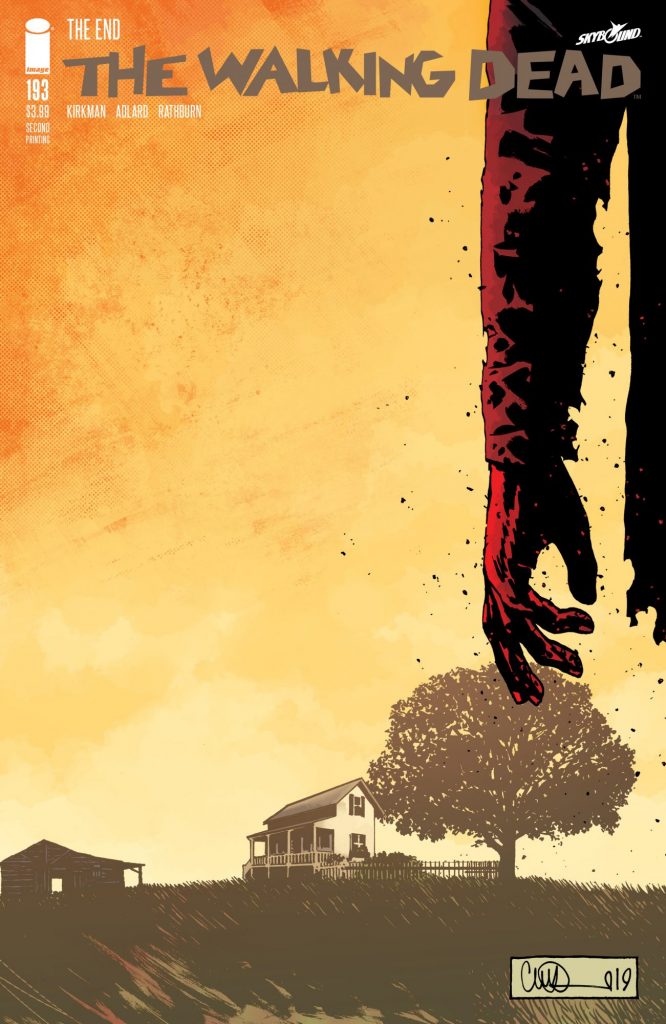
As noted by Brandon Schatz and Danica LeBlanc in their The Retailer’s View column at The Beat about The Walking Dead’s surprise ending, retailers have a tendency of taking early looks at big comics and then telling the world about them. This kind of behavior understandably makes publishers wonder whether they can trust their retail partners. For transparency to be the norm, shops need to show a little more discretion with what is shared with them. 10
Another issue retailers face is the increasing trend of readers not pre-ordering comics or adding them to their pull lists, even. This limits expectations and confidence amongst shops when it comes to ordering. There isn’t a whole lot shops can do about this, of course. One of my favorite sayings is you can lead a horse to water but you can’t make them drink, and that fits here. Most shops I talk to actively do everything they can to motivate customers to pre-order or keep their pull lists updated, but there’s little you can do if the desire isn’t there or if the way the industry works has disincentivized readers from doing so. 11
However, one thing shops can do is find a way to make it easier for customers to commit to these actions, as it’s occasionally more complicated than it should be. For example, I have to go into my shop or call them and ask them to make a change to my pull. At that point they write it down on a piece of paper and hopefully update my list at some point. Sometimes they don’t, which decreases my interest in staying on top of it. Even further complicating things is I often forget what’s on my list, and the usual process to find out is going in and getting a print out from shop’s system. It feels archaic, or at the very least not particularly customer friendly.
That’s why something like ComicHub – a suite of retailer tools created by shop owner Stu Colson 12 – is so appealing and effective. It allows customers of shops that use ComicHub to update their pull lists whenever they want through an app-based experience. Anything that simplifies the user experience, ensures follow-through and lowers the barrier to entry is a huge advantage when it comes to pre-ordering. That’s not me saying you have to sign up for ComicHub if you’re a shop, but finding some sort of mechanism to make it easier on customers is certainly beneficial to everyone.
Lastly, it all circles back to publishers and the games they’ve been playing with increasing frequency. A whole lot of what the sales and marketing wings of the main direct market publishers have been doing in recent years is seemingly built on short-term order bursts. The problem with that is these strategies – for example, regular title relaunches 13 – are inspiring customers to sample comics more than ever, with the belief often being that if you don’t connect with the first issue a new relaunch is just around the corner.
That kind of short-term thinking has created the market conditions we’re dealing with these days, as every title gets a short leash from readers. This leads to shops needing to tighten their belts on orders which then leads to publishers wanting to wildly increase their lines and goose orders with a horde of gated variants to maintain their revenue numbers. All of this is a good way to sell from publisher to retailer, but it doesn’t do much to get the comics in the hands of customers. It’s not as bad as the 1990s when shops could build thrones from unsold inventory of Turok comics, but that’s largely a product of shops playing the game more cautiously than they once did.
This won’t generate the immediate turnaround other options like returnability would, but I’d love to see publishers redistribute some of the budget they have on variants and other assorted short-term tactics and move it to focused marketing campaigns designed to, you know, sell comics to consumers. 14 And I’m not talking about house ads for Amazing Spider-Man in Friendly Neighborhood Spider-Man or anything like that, as that preferred move by publishers doesn’t exactly create new readers. I mean outreach about new or existing titles to potential readers who may not know about them.
The frequency in which I go to a comic shop and am surprised by what I find is genuinely shocking. I’m a person who gets press releases from most publishers and pays pretty close attention to comic news, and I often have no idea what I’m looking at when I get to shops. That’s a step in the process that’s missing or underfunded, and something that could help shops order with more confidence, especially considering the volume of comics that are being published today. The numbers that are released on a weekly basis with little to no marketing support at all is borderline negligence, and it mostly ensures that many titles will struggle to find the audience they might deserve.
Lately, I’ve been rewatching The Good Place, a show that’s as much about morality and philosophy as it is about the cast and their journey through heaven, hell and everywhere in-between. Within it, one of the oft-cited texts is philosopher T.M. Scanlon’s “What We Owe to Each Other.” This book is about the idea of contractualism, a philosophical concept that’s effectively this: in society, we owe each other to operate in good faith and behave in a way that is rational enough others can’t reasonably reject it.
It’s a deeply fascinating concept, and one that’s rooted in the premise that we’re all better off if we factor each other into our decision making. Or, simply put, collaboration benefits everyone.
I love this idea, and often wonder whether or not this kind of thinking is something that the comic industry needs to work harder to consider. The struggle of course comes from how this idea pairs with our defining economic system: capitalism. That is largely built on the idea of “it’s all about the number one,” and everyone else can deal with it if they don’t like that. Naturally, that comes into conflict with a concept that requires teamwork and consideration, so it can be a struggle for those to coexist.
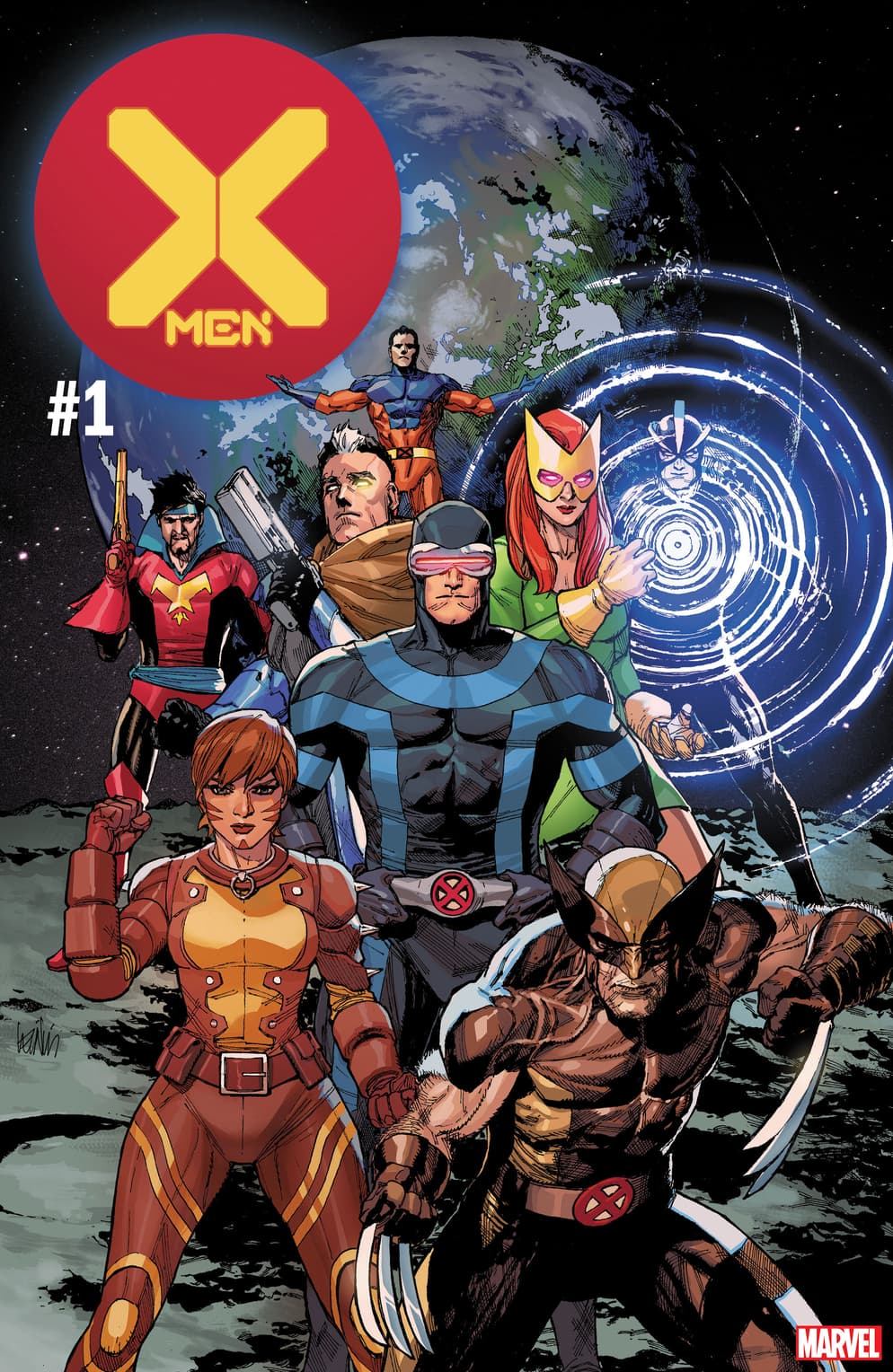
Yet I can’t help but think of the idea “What We Owe to Each Other” is built off of when I consider the relative struggles of the direct market. I don’t believe this side of the comic industry is dying by any means, but it’s certainly not meeting its potential for all players because of the inequities at the core of the relationship. In the current situation, retailers and publishers are effectively playing a different game, and one in which success does not look the same to each player.
Publishers want to sell to shops, and if they sell to customers eventually, that’s either a good thing or a big whatever, depending on the house we’re talking about. Shops solely want to sell to customers, and they don’t want to be caught with an excess of inventory that would act as an anchor on their bottom line if it doesn’t move. Because of that, a comic only needs to be an actual hit with readers to one group, and it’s the one absorbing all of the risk: the retailers. That’s a tough spot to be in.
If this was sports, I’d say it’s time to rework the collectively bargained agreement between the two partners – retailers and publishers – but there isn’t a CBA in the comic industry. That isn’t how it’s set up. Instead, it’s going to require a partnership designed to find mutually beneficial solutions – or, what each side owes to each other to achieve better results across the board.
There needs to be a reframing of what success looks like for everyone, because the only way for the direct market to grow is if each partner is properly incentivized to work collaboratively and in good faith with each other. This is why one word that keeps coming up when I talk to shops about the situation is “trust,” or the lack of it that they have in publishers. Without trust, it’s difficult for retailers to want to bet big on effectively anything publishers are doing, even if it’s as sure of a shot as something like House of X and Powers of X were.
That’s the part that needs to change for the direct market to see higher orders and a healthier ceiling. Risk needs to be redistributed and each partner needs to consider what success looks like down the chain. 15 If they don’t, it limits the potential of everyone involved and only motivates everyone to watch out for themselves and them alone, creating a slow arc downwards until something does change. Or worse.
Fortunately, this is happening in some parts of the business. As noted, partners like BOOM! and Vault are doing what they can to find solutions that work for all players, and Image and DC are employing tactics that reduce risk and encourage stronger ordering. These are good things.
Naturally, there’s always more that can be done, especially by the biggest driver of retailer frustrations, Marvel. 16 And beyond that, retailers and publishers working more collaboratively wouldn’t solve all of the direct market’s problems or immediately reduce the distance between the size of the comics conversation and the comics market. There are far more problems to consider in that regard.
But a little collaboration and consideration would be a start, and one that could help build a better, more sustainable future for the direct market if truly committed to.
In case you don’t know, speculators are people who buy comics for the purposes of reselling them for profit.↩
Some did nail their numbers, of course.↩
Meaning shops had to order reinforcements before they knew if this title would connect with readers at all, with these second prints naturally being unreturnable as well.↩
This is naturally an offshoot of the way the direct market ordering system works as well, which I’m not going to get into because I’m trying to keep this article as narrowly focused as possible.↩
Speaking of that, retailer Brian Hibbs suggests that sales have an upside of 100% return on investment for shops but 400% for publishers. So even the benefits of actual sales are disproportionately not in favor of shops.↩
Once the second print’s run was exhausted.↩
At least in the United States. Returnability was not offered to those who ordered through Diamond UK, per a retailer I checked in with.↩
I should note: DC requires meeting or exceeding certain order levels from other books, so they aren’t playing it totally straight.↩
Of course, this is a one bad apple spoiling the bunch situation, but all it takes is one!↩
More on that in a second.↩
Especially ones that have little point to relaunch, like the upcoming Doctor Strange #1 that continues the same storyline from the same writer as the previous volume.↩
I’m not going to go too deep on this, as comic marketing deserves and will earn its own piece here.↩
Sort of like what’s been done with the Comics Omnivore program, but on a much greater scale.↩
If they spent less time creating new ways to game the system in the short-term and more on finding solutions that work for them and their partners, they probably would need less weekly titles and variants to juice performance.↩

